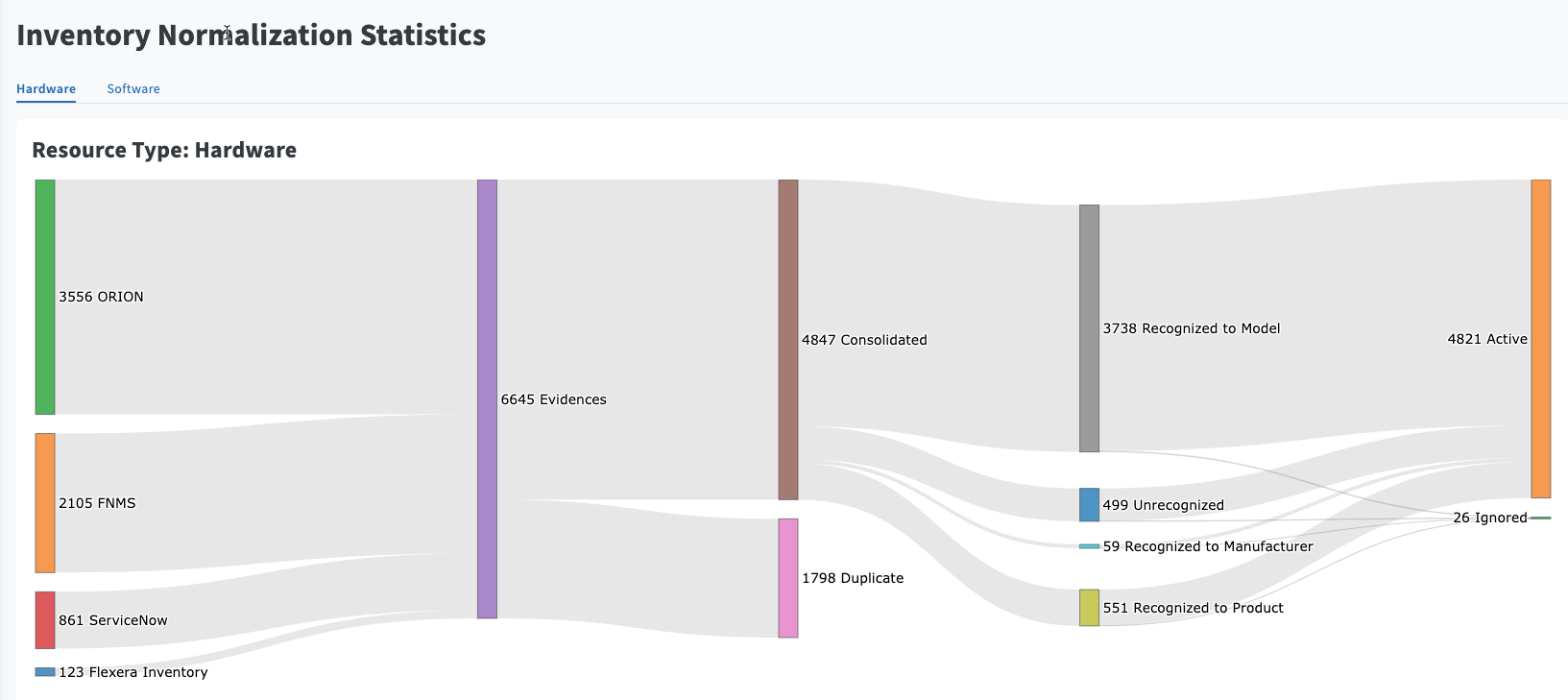Data normalization
What is data normalization?
Data normalization is crucial to achieving clear IT visibility. It involves organizing, refining and structuring raw IT data into a consolidated and categorized listing of all hardware and software assets. This meticulous process is indispensable for organizations aiming to gain accurate insights into their IT landscape. It facilitates better decision making, optimizes IT investments and ensures a harmonized view of technological assets.
What does it mean to normalize data?
Normalizing data involves adjusting values measured on different scales to a common scale. In the context of IT visibility, it's about ensuring that disparate data sources, formats and structures are brought to a standard format. This process eliminates redundancies, reduces anomalies and ensures your data is consistently categorized and easily comparable. By normalizing data, your business can ensure your IT asset information is accurate, reliable and actionable.
Data normalization is crucial for clear IT visibility
- Uniformity and consistency: Data normalization ensures that data across your entire IT estate is consistent, eliminating discrepancies and redundancies
- Enhanced decision making: With a clear view of your IT assets, you can make informed decisions related to IT investments, risk management and compliance
- Optimized IT investments: By understanding your IT landscape, your organization can allocate resources more effectively, reduce unnecessary costs and ensure you're leveraging the most up-to-date and efficient tools available
Data normalization facilitates strategic business decisions
Data normalization goes beyond just IT asset management. It plays a pivotal role in:
- Risk mitigation: By having a clear view of all assets, you can identify potential vulnerabilities, outdated software or hardware nearing its end of life, allowing for timely updates or replacements
- Cost savings: With a structured view of your IT assets, you can identify redundancies, unused licenses or underutilized resources, leading to potential cost savings
- Improved compliance: Regulatory standards often require your organization to have a clear understanding of its IT assets. Data normalization aids in ensuring compliance, reducing the risk of penalties
How does data normalization work in practice?
Data normalization involves several steps, starting from data collection to its transformation into a structured format. This includes removing duplicates, correcting errors and ensuring consistency in naming conventions and categorizations. The goal is to create a single source of truth and reference point for IT assets, making it easier to manage and analyze.

In today's data-driven business environment, the importance of clean, structured and normalized data cannot be overstated. It's the bedrock upon which your enterprise can strategize, make informed decisions and drive growth. Normalization is the lighthouse amid a vast sea of data, leading businesses to actionable insights and clarity.
